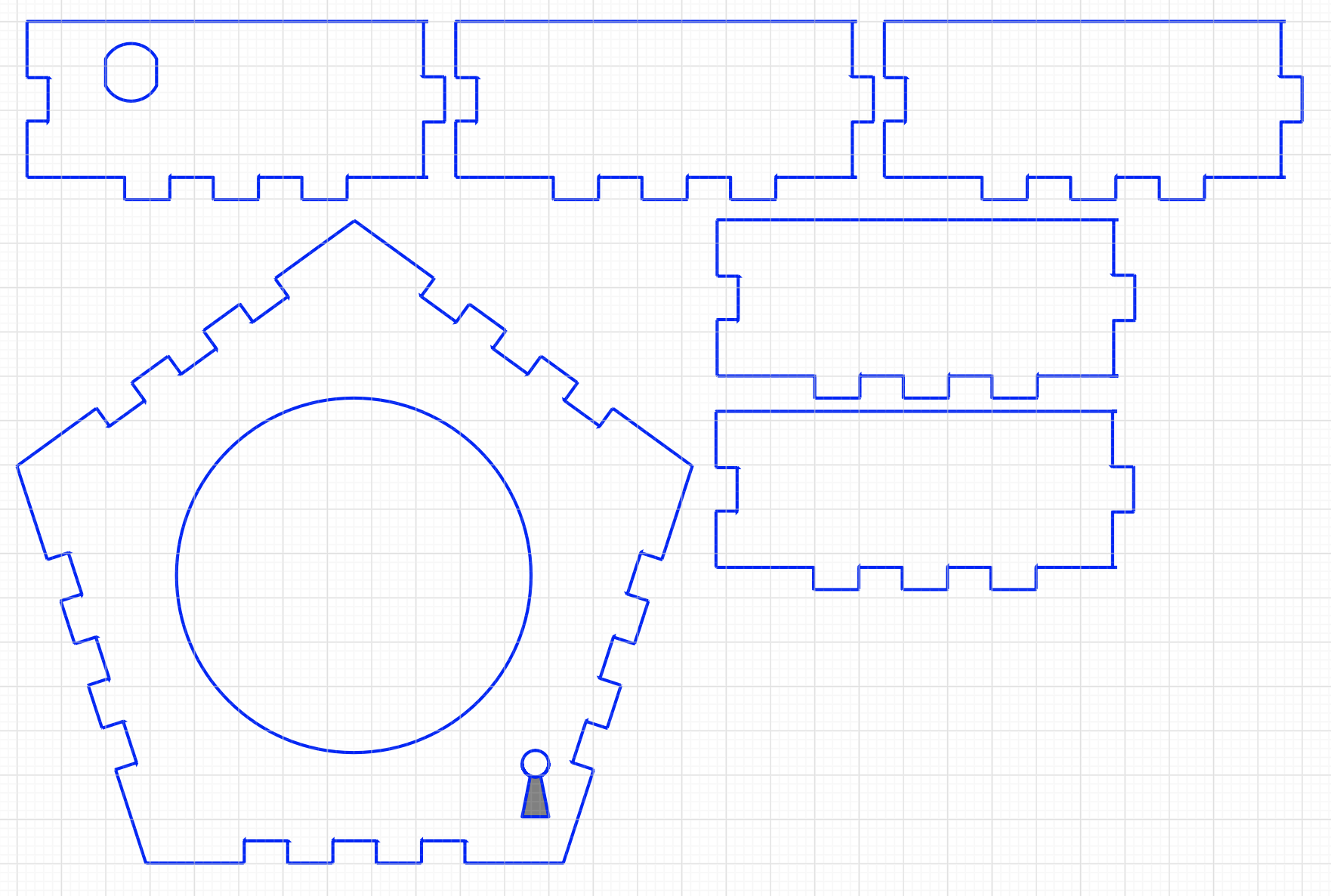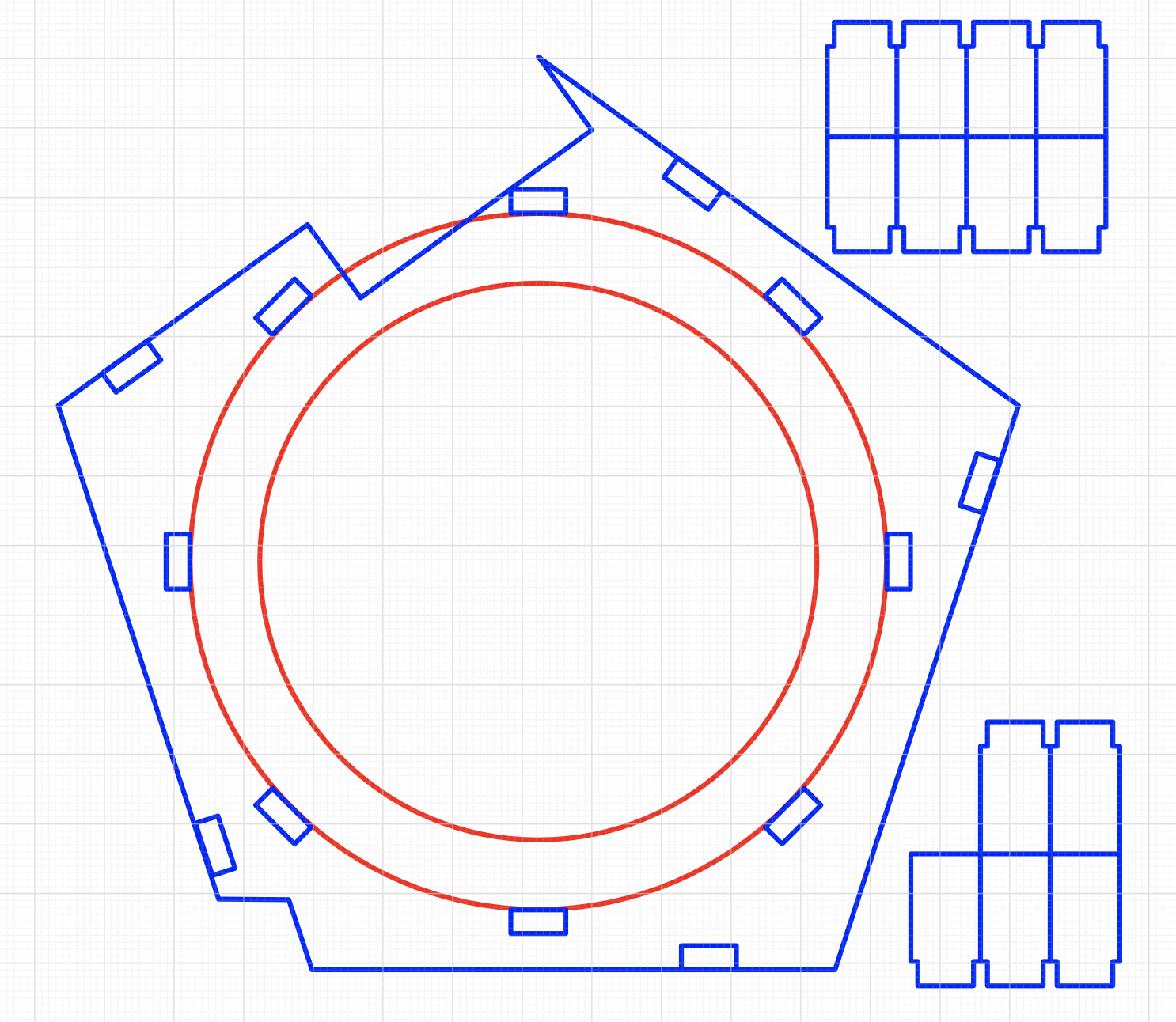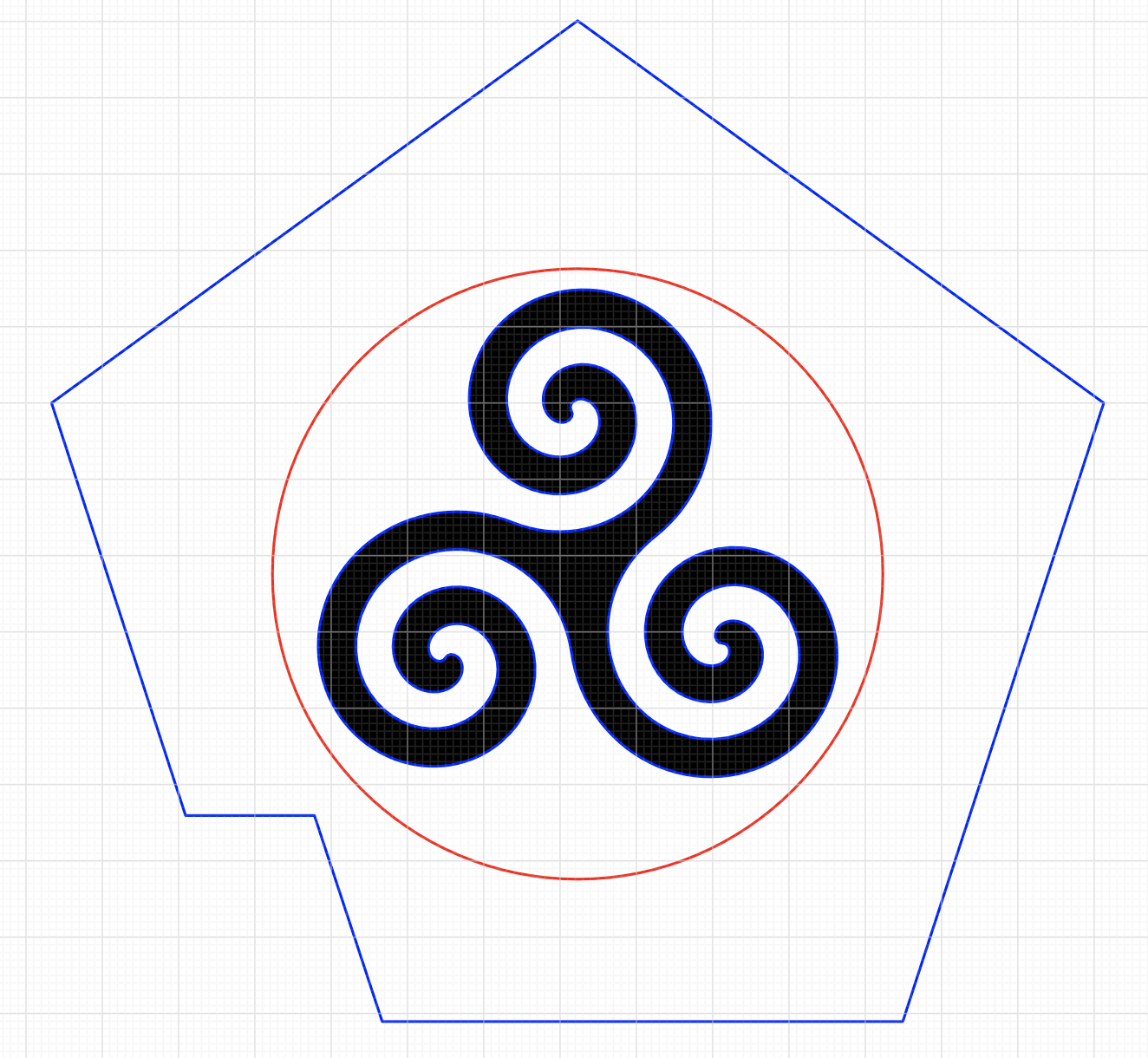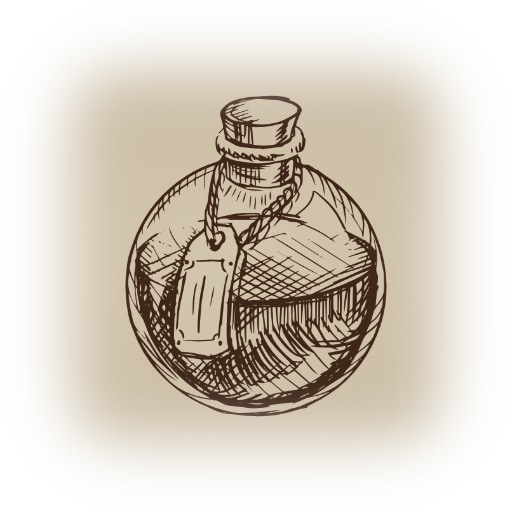Mixing Station
This is a placeholder for the mixing stations.
The mixing stations acted as a flourish to help show off the vibrant colors we came up with for the ingredients and resulting drinks defined in [the potions textbook]. When activated with a wand, the surface would fade in with a soft white glow, punctuated by a hint of one of the four house colors, at random. Those specks of color would rotate around the surface, as if “mixing” your drink by magic. Another tap of the wand, and Mischief Managed — the lights fade out.
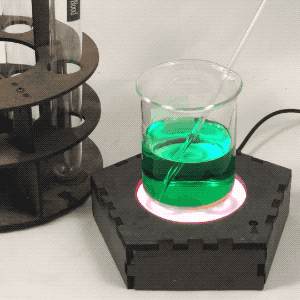
Like the cabinets, these are powered by an Arduino Pro Mini for the code and a Hall effects transistor to sense the wand. Internally, they’re multi-layered pentagonal boxes. Below the circular window of the outer box is a sheet of translucent plexiglass and the magnetic sensor. The plexiglass is etched and stained on the lower side so that the design shines through when lit up. Below this is the ring of LEDs, held in place by spacer pegs. There’s a light baffle below this, serving dual purposes: it holds the lights in place and prevents stray light from leaking out around the bottom. Finally there’s the logic board at the very bottom.
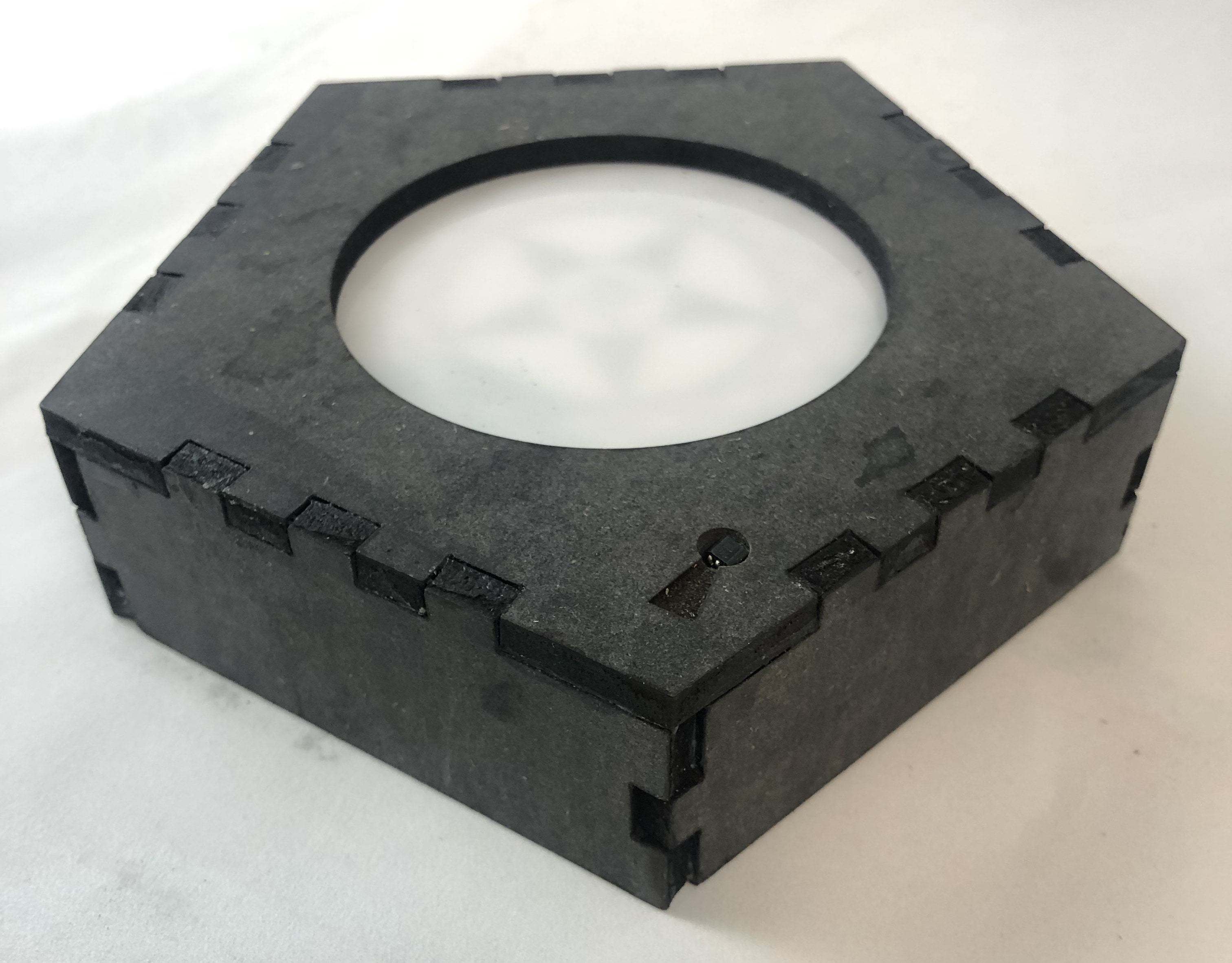
On the outside surface, the etched “keyhole” has a small opening for the Hall effects transistor. In bright light, it’s fairly obvious, but in the more dim light of the event, it all looks etched.

The white acrylic layer, the pane that holds your drink and lights up with an animation, is a simple laser-cut piece with etching on one side. It’s the shape of the interior of the box, with a cutout for the Hall effects transistor to poke through the opening in the keyhole. A neat design trick here is to leave the protective paper on the acrylic and use it as a paint mask. The etched design burns off both the paper and etches into the acrylic, leaving the rest of the paper intact. Paint, let dry, and peel.
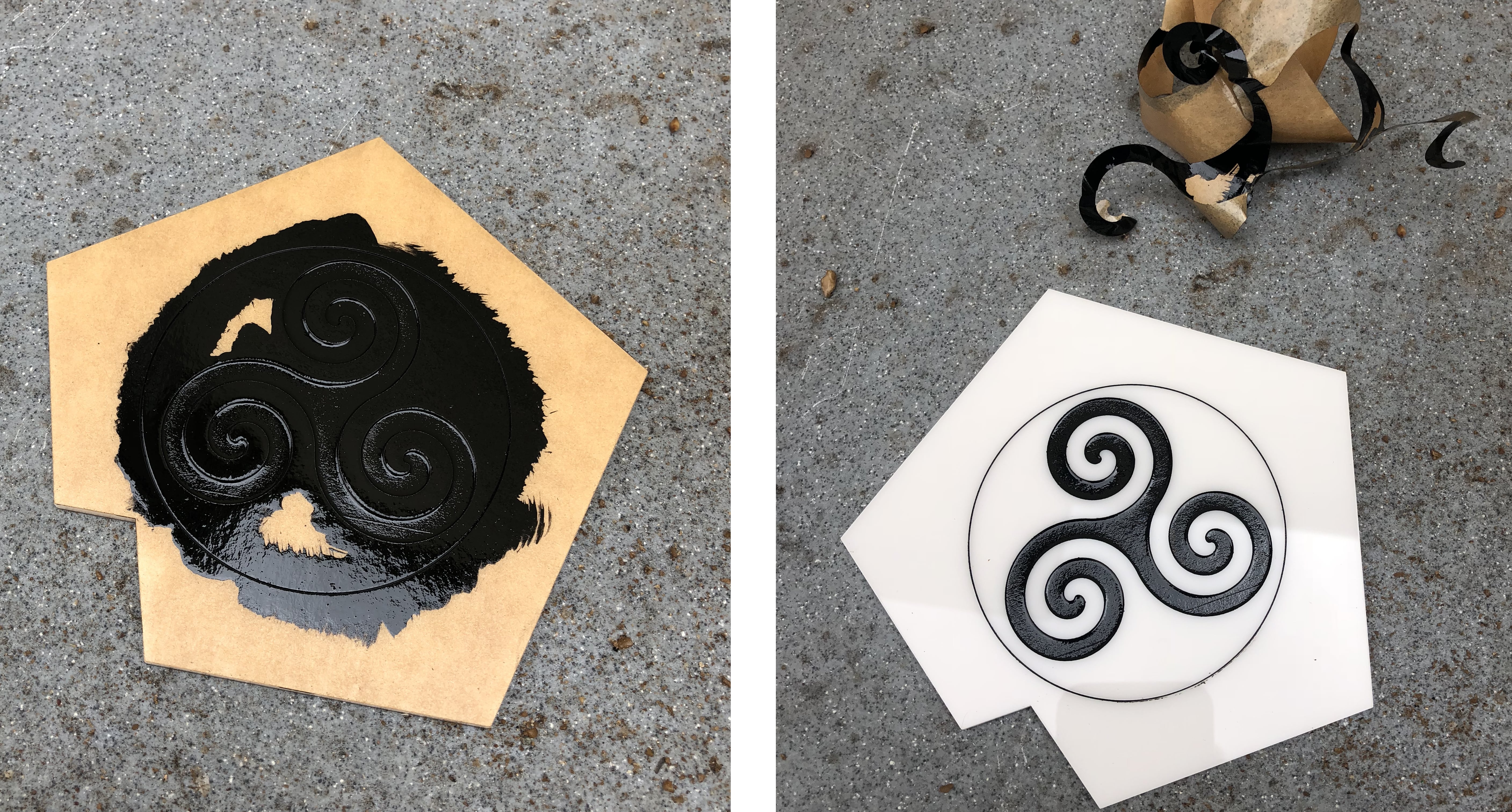
The next layer in holds the LEDs in place. The pegs serve a dual purpose. They not only hold the LED strip in a circle, but their height (the width of the LED strip) is a spacer between the acrylic layer and the lights, so nothing gets squished. There’s a large passthrough cutout for wiring: magnetic sensor, LEDs, and power connector.
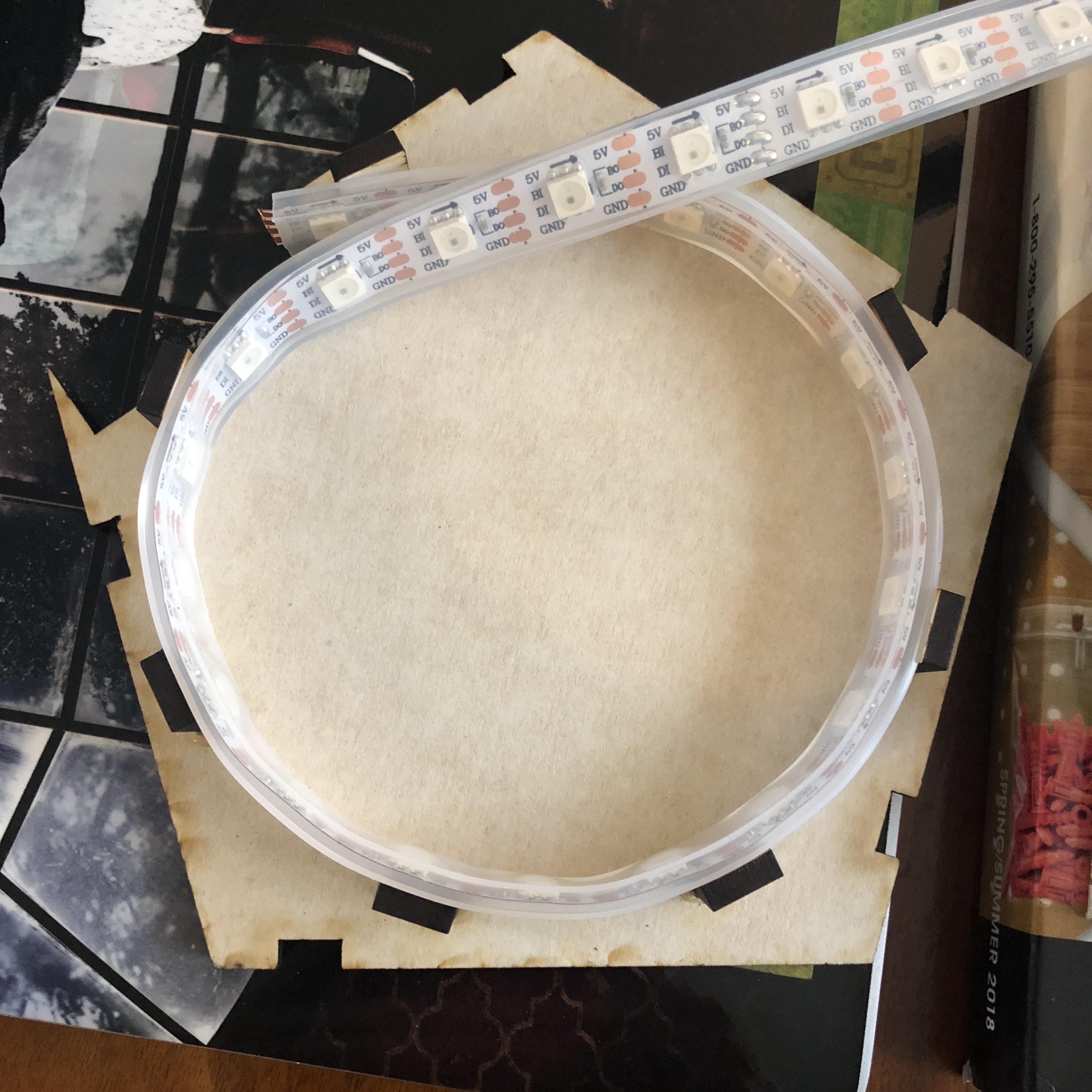
Finally, at the bottom is the microcontroller.
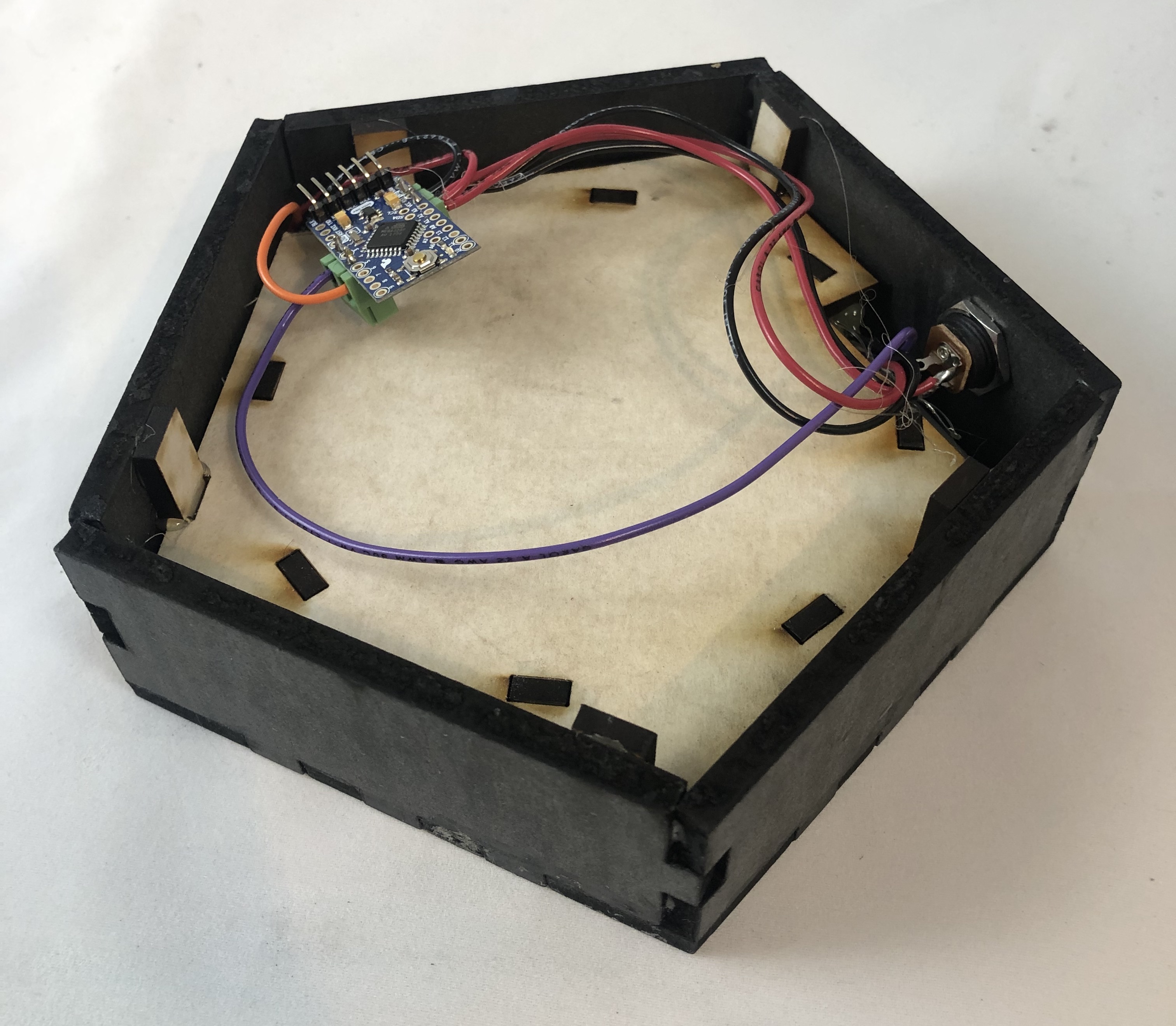
The laser files and source code are available on the GitHub project page.
